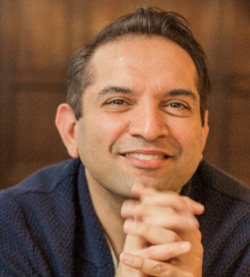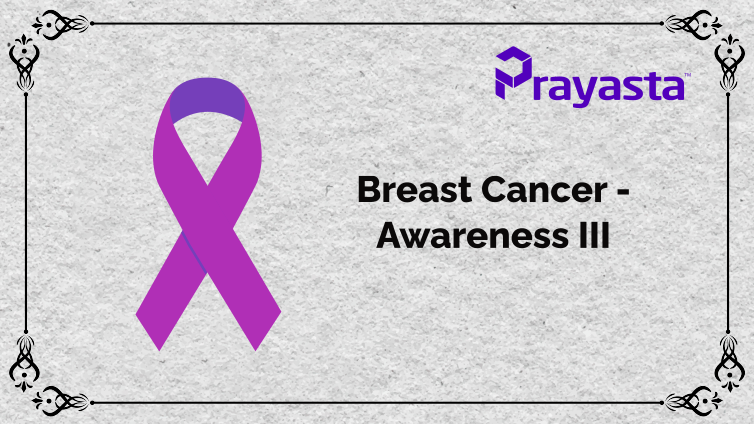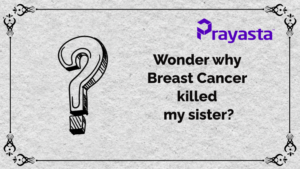Dr Ajay Sharma insists one must not hesitate to help and talks about the importance of ASK! He talks about the need to have better information if a lump is found in a breast and to see whether it is actually a cancerous lump or not. Read more about his perspective.
One of the points I like to emphasize is the need to get a diagnosis early. Prevention is better than cure is an age-old adage. Yet, we miss out on time or opportunity to find out earlier. The information we seek, and share can be useful to someone in dire need. Don’t hesitate to help and most importantly don’t hesitate to ASK! There is no shame in reaching out for help. We live in a time where info is available at the click of a button. Besides which organizations both private and government have earmarked dedicated portals to be of service.
Before I pen some thoughts on the treatment part, I would like to give some more details on the physical examination and radiological examination aspect based on age groups and risk groups (awareness II). The recommendation for clinical breast exam/ mammography or any other diagnostic procedure is determined by your physician based on risk factor and other underlying conditions. The following table is simplified and adapted from the NCCN guidelines for breast cancer screening (You can read more on invasive cancer at https://www.nccn.org/patients/guidelines/cancers.aspx )
Age/ Risk | Breast Exam | Clinical Breast Exam | Mammography* |
25-40 years- Normal | Once a month post periods | Once 1-3 years | None |
Over 40 Years- Normal | Once a month post periods | Once a year | Once a year or 2 years |
Any age – High Risk | Once a month post periods | Sometimes twice every year | Over 25-Once a year* |
*Mammography: Mammography involves exposure to radiation so in a high risk category the doctors might recommend MRI of the chest area instead or along with mammography based on individual risk category. Alternatively, ultrasound is recommended in women who are pregnant or cannot undergo MRI.
Now that the doctor has determined me to have a lump in my breast, is it cancer for sure?
Understanding options post screening is very important. Screening is just the first step in the direction for diagnosis. Therefore, despite writing about the diagnostics in my earlier blog, I thought I might as well repeat with some more information before I briefly touch upon treatment.
A lump might be benign or cancerous. In order to determine the type (earlier blog) the following types of invasive procedures are normally planned by your physician. The following section is sourced from (http://cancerindia.org.in/breast-cancer/) as I found the explanation to different approaches quite simple.
Biopsy:
Fine needle aspiration biopsy/cytology (FNAB/FNAC): After a positive physical examination/ ultrasound or mammogram, a small piece of tissue/fluid is taken from an abnormal finding area of the breast and examined for cancer cells using a thin needle and a syringe without using anesthesia.
Core needle breast biopsy: A larger, hollow needle is inserted into the breast lump and cylindrical piece of breast tissue (core) is taken out for histopathological examination to confirm cancer. A core biopsy provides more breast tissue for examination than FNA.
Surgical (open) biopsy: Occasionally, surgery may be recommended to remove a part or whole breast lump to check for cancer. This is performed under anesthesia.
Nipple discharge cytology (nipple discharge exam): A sample of fluid or discharge from the nipple is examined under the microscope to look for cancer cells. Even if the nipple discharge cytology result is negative, the surgeon may go in for other tests if there is clinical suspicion.
Once I have a diagnosis, what should be the next step?
Certain key decisions need to be made before undergoing any form of therapy. Day-to-day challenges and care (will be covered in my next blog) should be addressed first, as planning is the first step.
By this time with diagnosis in hand (a second opinion might be sought…if in doubt) and may be referred to a medical oncologist who along with a team of specialists will determine the course of treatment. It’s important that the affected person and family also participate, clarify all the doubts. Understand the side effects of therapy, in order to plan your day-to-day care.
The treatment is tailor-made or specific to the cancer type, stage and underlying comorbid conditions. Besides which a successful therapy of breast cancer means getting rid of the cancer or getting it under control for an extended time. But because breast cancer is made up of different kinds of cancer cells, getting rid of all those cells can require different approaches.
The treatment plan may include a combination of the following treatments:
- Surgery
- Radiation therapy
- Chemotherapy
- Hormonal therapy (anti-estrogen therapy)
- Targeted therapies (specific antibodies are used)
Designing a personal treatment strategy to treat breast cancer requires a lot of careful thought and consideration. The ideal treatment plan works against all the things inside the cells that have led to it; develop, grow and spread.
Cancer treatment is not cheap, having said that there are resources available under various schemes (http://cancerindia.org.in/financial-aid-and-resources/) and foundations that aid in providing the required support.
The COVID-19 scenario increases the risk of death for the risk category (diabetes, hypertension, elderly, cancer…), while you take time to read this blog. Please take necessary precautions to be Safe and healthy. Spread the word…share it’s a way to care!
ABOUT THE AUTHOR

Dr. Ajay Sharma
An Emergency Medicine Physician – Scientist – Author, has over 2 decades of professional experience in multi-cultural environment offering a holistic approach to health care issues. He provides services related to medical device development, validation, mentoring and reporting. Passionate about evidence – based approach to health care, health tech., education, preventive care and food.



